Power consumption
The power consumption is approx. 13 watts in the idle exactly where you could expect them. What catches our eye, however, is the extreme difference between the power consumption of the cold and the fully heated card! We measure significantly more than 30 watts less when the card is fully heated, which proves that it is already running very clearly into the thermal limit and is slowed down by Boost.
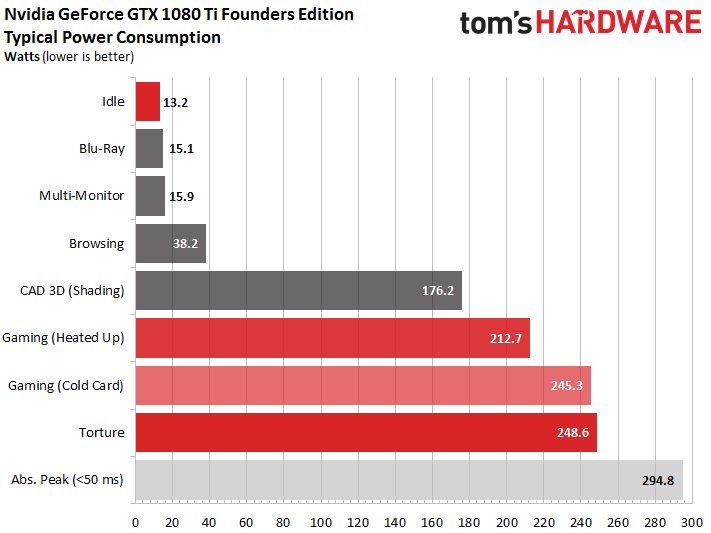
To prove this, we have logged the temperatures and clock rates during the warming phase and compared them in a time frame:
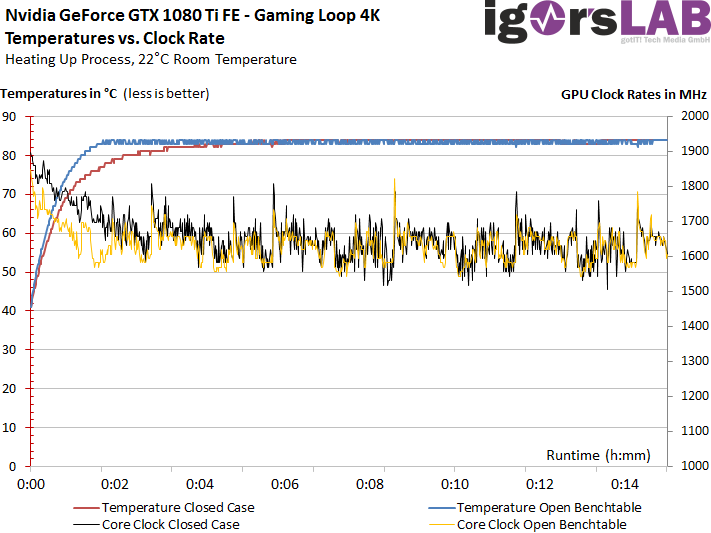
This slump can also be found in the Torture Loop, albeit somewhat weaker, since the overall loads are much higher:
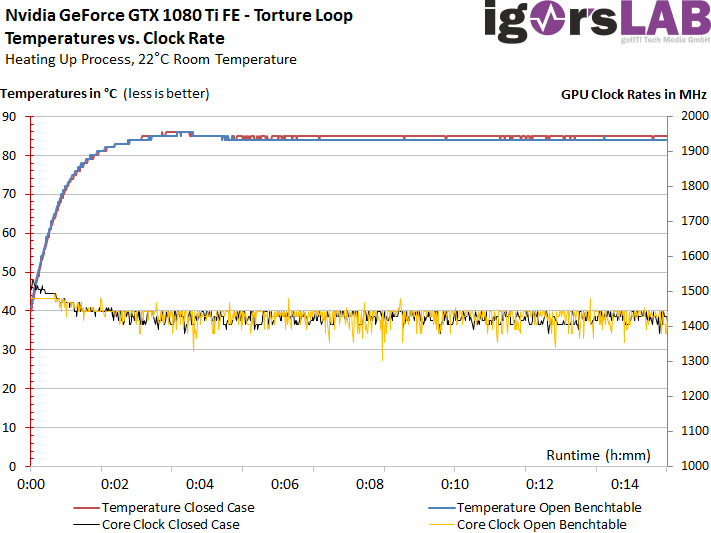
But what does this behavior look like compared to the Titan X (Pascal)? For this, too, we use our extensive data set and see amazing things. Even if the average clock rates after the warm-up phase are still just above those of the Titan X (Pascal), the heating of the GeForce GTX 1080 Ti is a little faster (temperature progression), which gives the Titan X (Pascal) a slight advantage at least at the beginning.
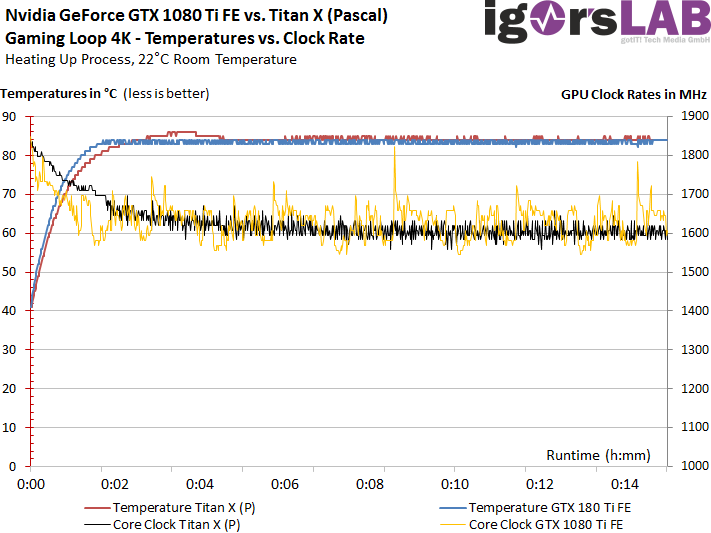
What is also striking is the slightly more constant clock course of the Titan X (Pascal), while Boost is a bit more hectic with the GeForce GTX 1080 Ti. Of course, we have created the right diagrams for the power consumption with our power curves, which interested parties can now click on. Let's first compare the map in cold and completely warmed up state:
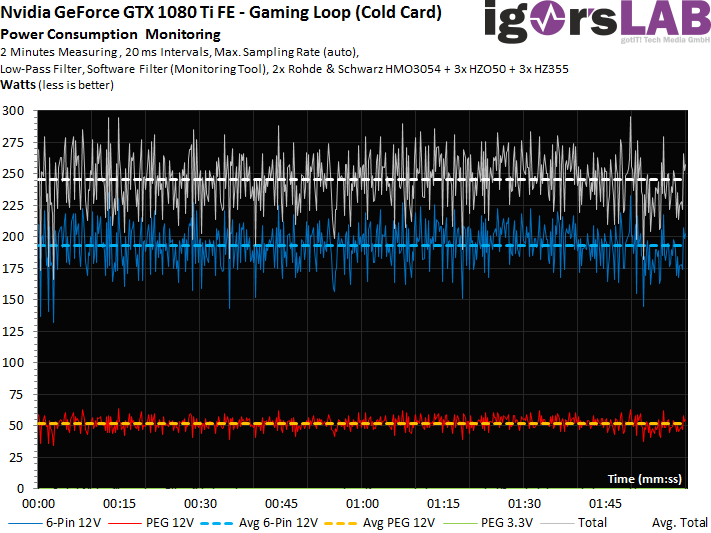 |
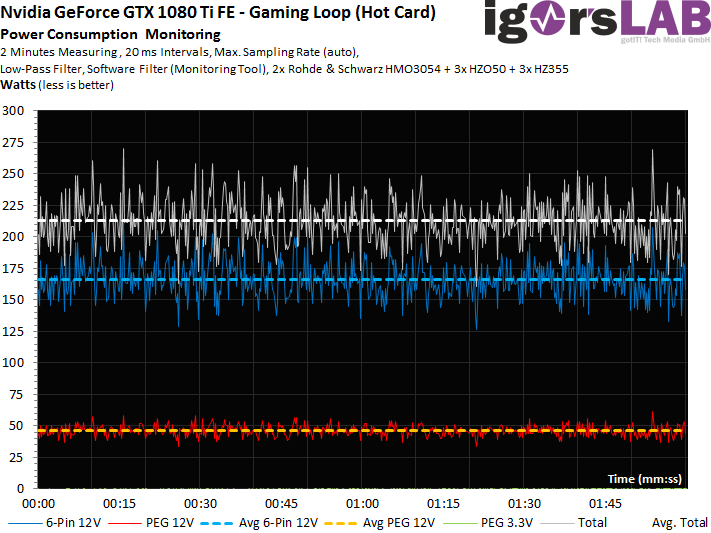 |
Even with the flowing currents we see the clear difference between cold and hot:
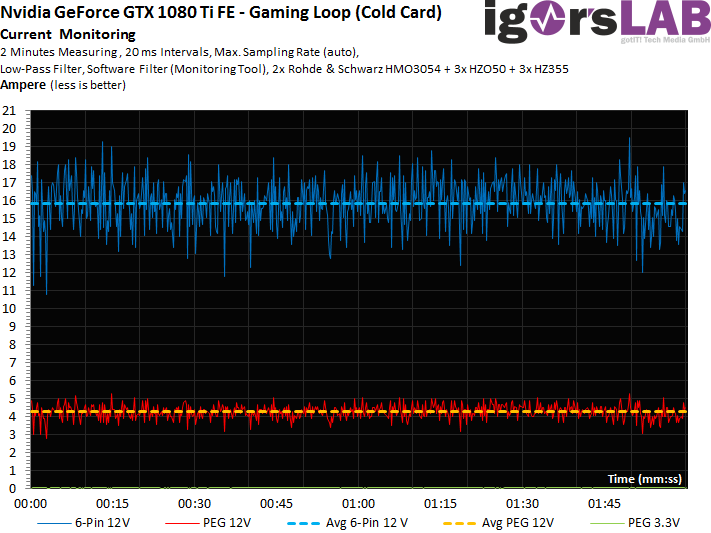 |
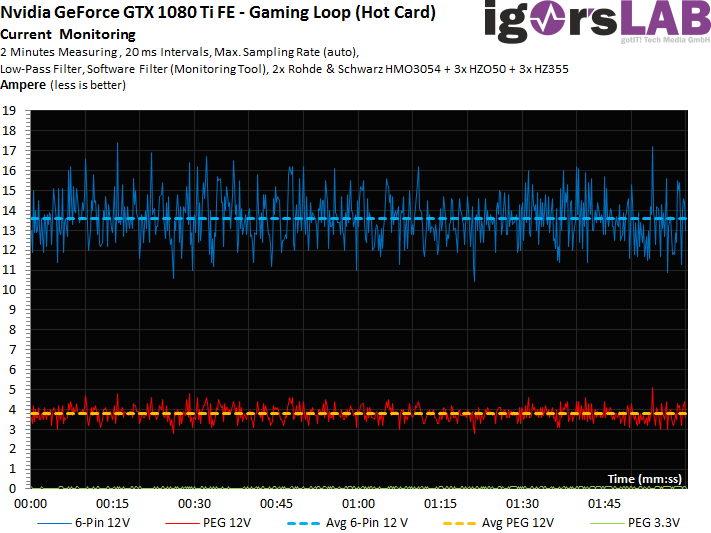 |
In the stress test we only logged the power consumption and the currents in detail with the hot card, because the two maximum values were very similar (limitation by the power target of 250 watts). What we can see, however, is that Nvidia really has this limitation under control almost precisely.
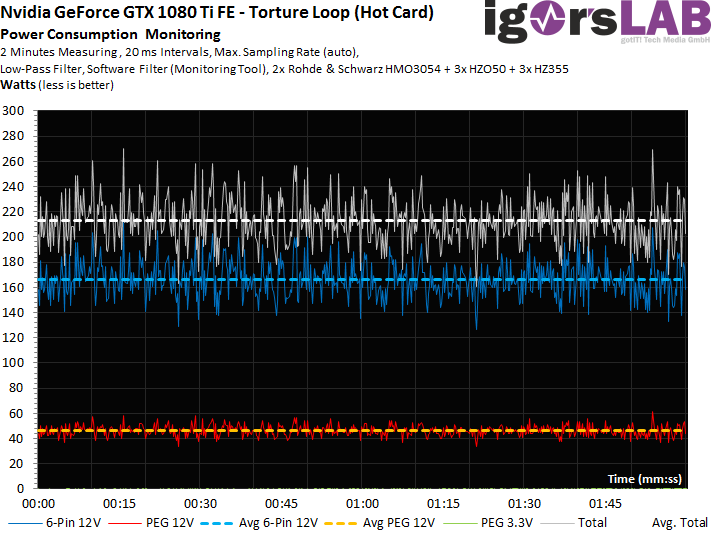 |
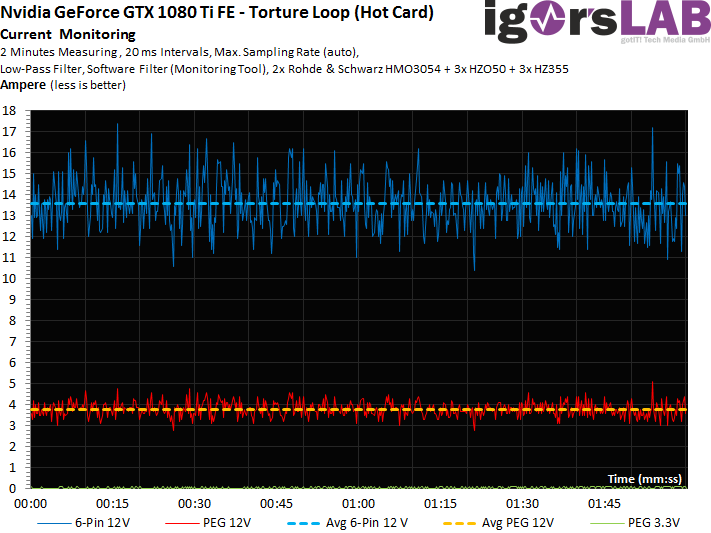 |
Compliance with standards
Since the launch of the Radeon RX480, we have also been paying more attention to compliance with applicable standards, and since then we have also taken over this section for all tested cards, regardless of manufacturer. This is also the case for the GeForce GTX 1080 Ti FE, which, however, remains significantly below what the PCI SIG recommends for the 12V motherboard connection in any situation. The 3.3V rail does not really matter, as only the 12V rail is used for the power supply of the card.
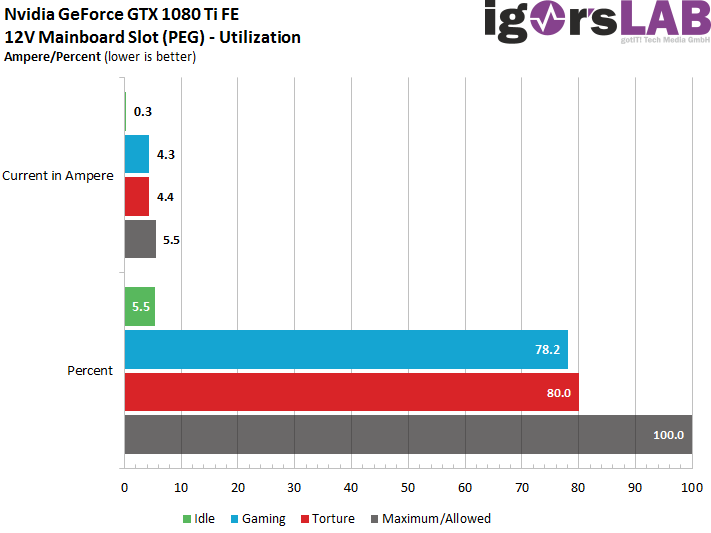
With a maximum of approx. 4.4 Ampere is thus far below what was specified with 5.5 ampere as the upper guideline and thus fully in the green area.
Test setup and measurement methods for power consumption
The new test system and the methodology have already been described in great detail in the basic article "How We Test Graphics Cards" (English: "How We Test Graphics Cards") and therefore, for the sake of simplicity, we now only refer to this detailed Description. So if you want to read everything again, you are welcome to do so.
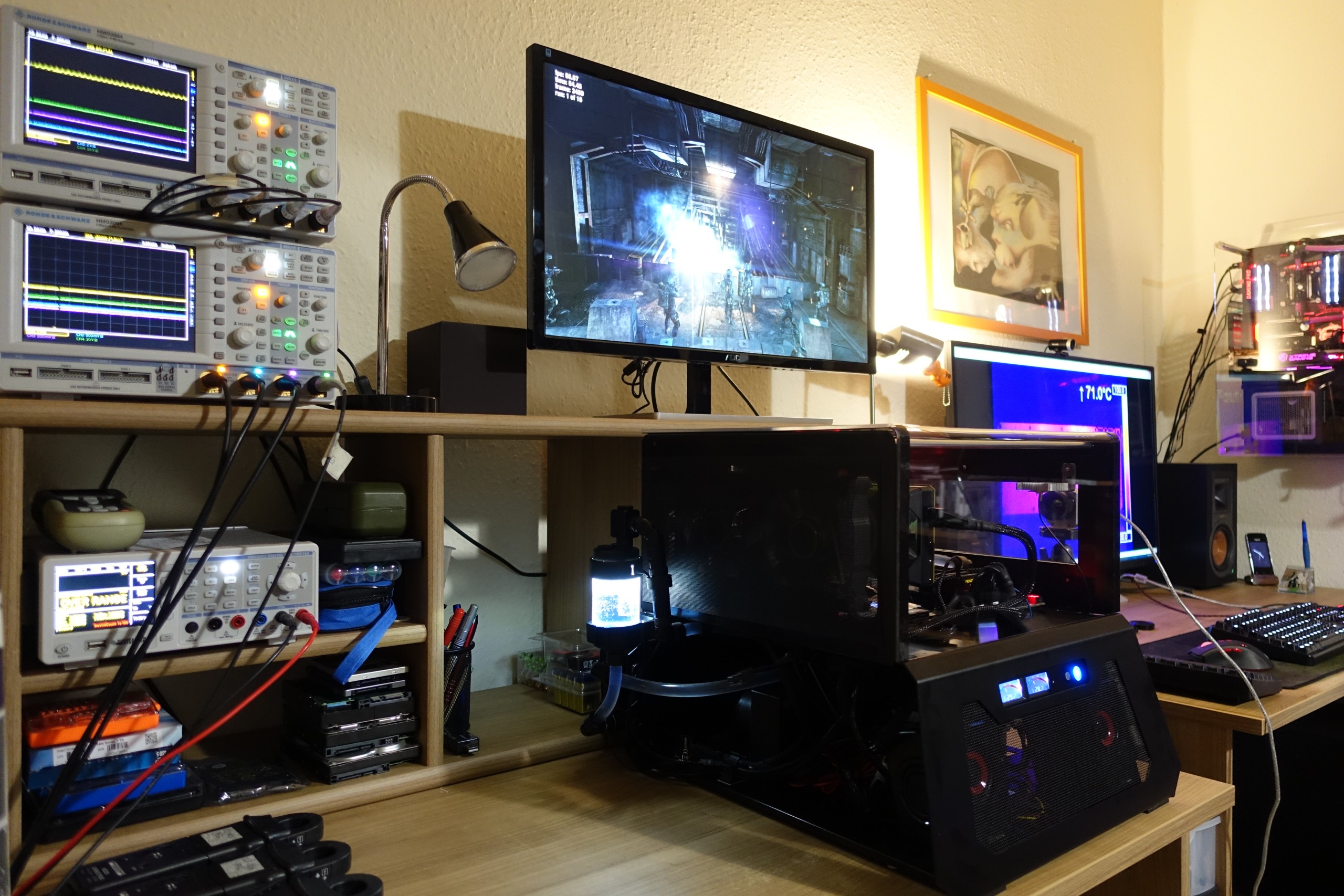
If you are interested, the summary in table form quickly provides a brief overview:
| Test systems and measuring rooms | |
|---|---|
| Hardware: |
Intel Core i7-5930K -4.2GHz MSI X99S XPower Gaming Titanium Corsair Vengeance DDR4-3200 en 2400 MHz 1x 1 TByte Toshiba OCZ RD400 (M.2, System SSD) 2x 960 GByte Toshiba OCZ TR150 (Storage, Images) Be Quiet Dark Power Pro 11, 850-watt power supply Windows 10 Pro (all updates) |
| Cooling: |
Alphacool Ice Pump VPP755 Alphacool NexXxoS UT60 Full Copper 360mm Alphacool Cape Corp Coolplex Pro 10 LT 5x Be Quiet! Silent Wings 3 PWM Thermal Grizzly Kryonaut (for cooler change) |
| Housing: |
Lian Li PC-T70 with expansion kit and modifications Modes: Open Benchtable, Closed Case |
| Power consumption: |
non-contact DC measurement on the PCIe slot (Riser-Card) non-contact DC measurement on the external PCIe power supply Direct voltage measurement on the respective feeders and on the power supply 2x Rohde & Schwarz HMO 3054, 500 MHz multi-channel oscillograph with memory function 4x Rohde & Schwarz HZO50, current togor adapter (1 mA to 30 A, 100 KHz, DC) 4x Rohde & Schwarz HZ355, touch divider (10:1, 500 MHz) 1x Rohde & Schwarz HMC 8012, digital multimeter with storage function |
































Kommentieren